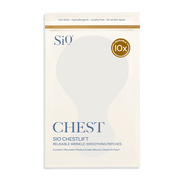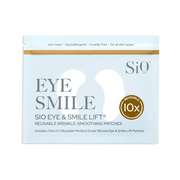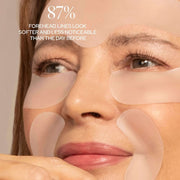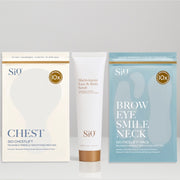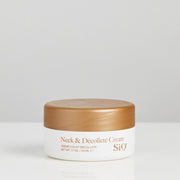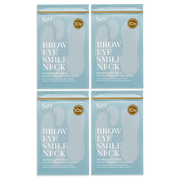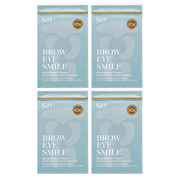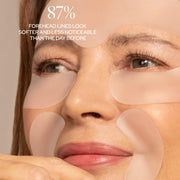Acne Scars

How to Get Rid of Acne Scars
Acne is not just a teenage skin condition, and the statistics don’t lie. Approximately 50 million Americans are touched by acne each year, making it the most common skin condition in the United States. Acne can occur during any life stage, but research suggests that the adult version is on the rise for reasons such as increased stress, lifestyle, and fluctuating hormone levels.
Acne breakouts can be frustrating to get under control, but nothing is more discouraging than the acne scars left behind when you do. Do acne scars go away? Yes and no. Unfortunately, if they’re not treated, they can become permanent. Acne scars aren’t just characterized by their color, like distinguishing hyperpigmentation, but also the texture that typically feels like a small indentation in the skin. But before treating any scarring, you have to get rid of your acne first, as new breakouts will only lead to additional scars. While this may sound disheartening, the good news is you can treat this condition with the right acne scar treatment — and a great deal of patience.
Types of Acne Scars

Atrophic (Depressed) Scars
An atrophic scar forms when the skin cannot regenerate tissue correctly as the pimple is healing, resulting in unbalanced scarring that looks indented. Atrophic scars appear in three forms:.
- Ice Pick Scars: This type of atrophic scar is narrow, pitted, and resembles a mark left behind after being poked with an ice pick, hence the name. These acne scars on the face tend to surface on the forehead or cheek area after a severe breakout (or cystic acne), but they can appear on the neck, chest, back, and shoulders. While most acne scars tend to fade with time, ice pick scars need more intense treatment from a medical professional.
- Boxcar Scars: These u-shaped scars have sharp edges and resemble the look of the mark left behind when a fingernail is pressed into the skin. They tend to be shallow more than deep, which makes them more responsive to resurfacing treatments.
- Rolling Scars: As the name implies, rolling scars have rounded edges and give the skin a wavy texture. Since they tend to be shallower, you may not be able to see them when you stretch the skin. Unfortunately, this type of scar may become more prominent with time as the skin loses collagen and elasticity. Those with chronic, long-term inflammatory acne tend to get rolling scars.
Hypertrophic (Raised) scars
Unlike atrophic scars, hypertrophic scarring is caused by too much collagen production during healing. Thus, they are raised above the surface of the skin — mainly on the back and chest
Acne Scar Treatments

If you’re wondering how to fade acne scars, there are several options. While topical treatments are great for controlling and treating breakouts and softening some pigmentation issues, severe acne scarring needs in-office therapies to help correct the structural changes in the skin. We’re talking about everything from peels to lasers to light therapy. Of course, there’s no such thing as a “miracle treatment.” Fading acne scars with a dermatological treatment takes patience, consistency, and, unfortunately, a decent amount of cash to see a result. Let’s take a closer look at your options.
-
Chemical Peels: Available in various strengths, chemical peels are strong acid solutions applied to the skin by a dermatologist or esthetician to reduce acne scars’ appearance via chemical exfoliation. The most common peels for treating scarring include salicylic acid, glycolic acid, Jessner's solution, resorcinol, and trichloroacetic acid. Peels are effective on all acne scars — even the deeper ones, though a medium to a more robust solution will likely be used. A health care professional will tell which type of peel is best for your skin type and scarring.
The peeling process generally commences 48-72 hours after your treatment and can last anywhere from 2-5 days. You mustn’t pick at your skin in order to prevent additional scarring. Apply a gentle moisturizer regularly to keep skin hydrated and protected. -
Microneedling: If you have depressed scars due to a lack of new collagen when a pimple or breakout is healing, then microneedling may be an option. Microneedling involves lightly rolling a small wheel filled with very tiny needles over the surface of your skin. While microneedling helps treat acne scars, it’s also a procedure commonly used to treat beauty woes like scars and wrinkles, alopecia, stretch marks, and more. While it sounds a bit ominous, the needles just barely break your skin, causing a bit of “injury.” While that injury doesn’t actually damage your skin, it’s enough for your body to kick in with a healing response. Skin cells immediately get to work, rebuilding your skin and producing collagen.
In a study titled Microneedling Therapy in Atrophic Facial Scars: An Objective Assessment, 34 out of 36 microneedle patients “achieved a reduction in the severity of their scarring by one or two grades. More than 80% of patients assessed their treatment as ‘excellent’ on a 10-point scale.” Even so, remember patience is a virtue. It can take three to six months after your treatment for new collagen to form.
- Microdermabrasion: Microdermabrasion is where a dermatologist or esthetician uses a small, hand-held device that deeply exfoliates the top layer of skin. It works best on atrophic scars next to the skin — but not ice pick scars because they’re too deep — or shallow rolling or boxcar scars.
- Ablative Laser resurfacing: This particular type of laser resurfacing treatment heats the skin layers underneath to promote collagen production, which encourages the skin to become smoother and more even. All acne scars and those with a lighter skin tone (it’s not as effective on darker skin) can benefit from laser resurfacing. Expect some facial swelling for 24-48 hours after treatment (nothing an ice pack can’t fix!), itching or stinging for 12-72 hours, and peeling around a week later.
- Fillers: Since collagen loss can make acne scars look more prominent, fillers (commercial or collagen) can help even out skin with a limited amount of boxcar or rolling scars. Remember that you’ll have to repeat the treatment (approximately) every six months, though some fillers are permanent.
Skincare for Acne Scars

As aforementioned, you have to control your acne before treating it with a procedure such as microdermabrasion or laser resurfacing. For moderate to severe acne conditions, it’s best to speak to a dermatologist about crafting the best skincare routine to help you achieve your goals. Not to mention, the less you break out, the fewer scars you’ll have in the future.
- Stimulate Collagen Synthesis With Retinoids: While there are over-the-counter retinoids, your skincare professional may suggest a more potent, prescription-based formula depending on the condition of your acne scars. Retinoids (synthetic forms of vitamin A) stimulate collagen synthesis, which means they can penetrate beneath the epidermis smoothing out its appearance —imperfections included. Retinoids are best for depressed scars.
-
Treat With Alpha Hydroxy Acids: You’ll find these powerhouse ingredients in many skin care products for acne because they gently exfoliate the skin, keep pores from oil and debris, and help fade discoloration from acne scars. There are seven different types of acids, each of which is derived from a natural source:
Glycolic Acid: Sugar Cane
Lactic Acid: Lactose
Malic Acid: Fruits
Citric Acid: Citrus Fruits
Tartaric Acid: Grapes
Hydroxycaprylic Acid: Animals
Hydroxycaproic Acid: Royal Jelly - Fade Scarring With Salicylic Acid: SA is considered one of the best treatments for acne scars because it exfoliates, reduces redness and inflammation, and clears pores. If OTC methods such as a cleanser, mask, or spot treatment aren’t sufficient enough, a more potent version can also be administered as a peel.
- Strengthen with Niacinamide: Vitamin B3 is a potent nutrient that helps ward off dark spots, improve skin texture, strengthen the skin, and promote a bright complexion. It also has anti-inflammatory properties, making it an excellent ingredient for acneic conditions.
- Reduce Redness With Cryo: While it won’t get rid of your acne scars, skin rejuvenation can improve your complexion’s overall appearance. But there’s no need to head to the derm’s office. SiO’s Cryodrop tool can be used in conjunction with your favorite acne serum to help rejuvenate your skin’s appearance. The SiO Cryodrop tool diminishes the appearance of redness and irritation, re-energizes your skin. It enables you to fight the signs of aging for the long-term, thanks to cold therapy and facial massage.
- Protect With Sunscreen: An SPF should be worn every day (even when it’s cloudy) regardless of skin type, as sun exposure is the number one cause of aging skin. However, it can also darken acne scars and make them more noticeable. Look for an oil-free, non-comedogenic formula, so you don’t aggravate your acne.



